 |
| White Willow Catkins - 9 April 2017 In Scotland, branches of willow catkins were used to decorate churches to celebrate Palm Sunday. |
To the English imagination, the willow is the tree of summer, long hot lazy summers spent messing about on the water. A role immortalised in its eponymous reference in Kenneth Graham's classic 'Wind in the Willows'. And if not on the water, then sitting in a deckchair watching cricket on the village green and listening to the sound of leather on willow, before eating scones and drinking cups of tea in the interval between innings.
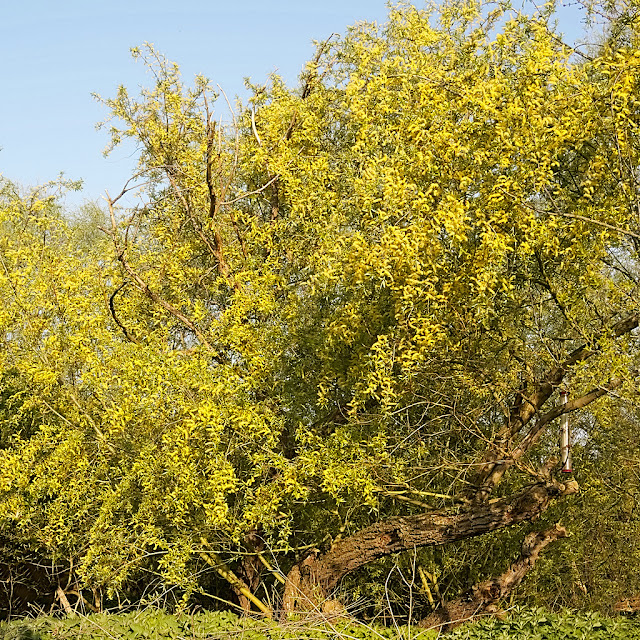 |
| White Willow - 9 April 2017 This tree with new shoots growing from its broken trunks, illustrate why willow is a symbol of rebirth and immortality in many parts of the world |
Over the centuries, willow has had less happy associations and became particularly associated with grief. In the sixteenth and seventeenth centuries, forsaken lovers would wear a cap made of willow twigs and leaves. A couple of hundred years later, willow found its way as a decoration on gravestones.
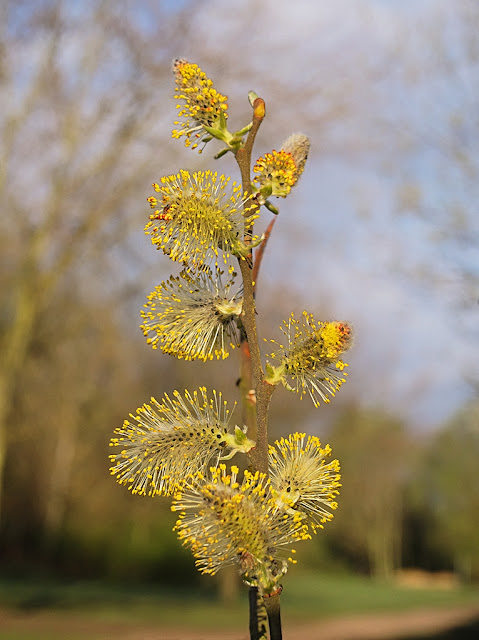 |
| Goat Willow Catkins - 2 April 2017 These catkins in the house are reputed to reduce fevers |
Yet for an indigenous tree, known from ancient times, the willow has attracted relatively little folklore or mythology. The Druids believed that two scarlet snake eggs were hidden in the willow, one contained the sun, the other the earth, from which the universe was hatched. Celtic tradition holds that the willow is a source of great psychic energy.
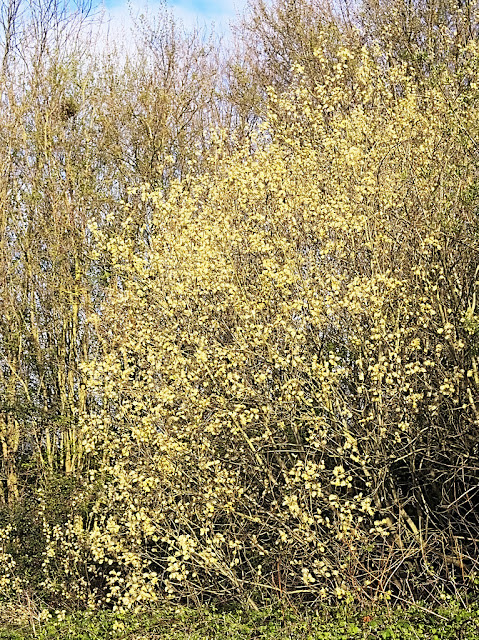 |
| Goat Willow - 2 April 2017 The goat willow catkins are far more conspicuous than the white willow counterparts, not only are they thicker, but there are no leaves to hide them. |
Perhaps, our ancestors did not feel the need to weave stories around the willows, because they were, and still are, such really useful trees. Listed uses include: cricket bats, baskets, wicker furniture, wattle and daub walls, outdoor furniture, ornamental boxes, doors, fodder and fuel. This is apart from the medicinal uses of willow, which, we now know, are derived from the salicylic acid in its bark. Salicylic acid is the active ingredient of Aspirin, and just like Aspirin, willow bark was used to relieve pain and reduce fever, as well as treating a wide range of other conditions including gout, rheumatism, sore throats (as a gargle), skin conditions, whooping cough and catarrh.
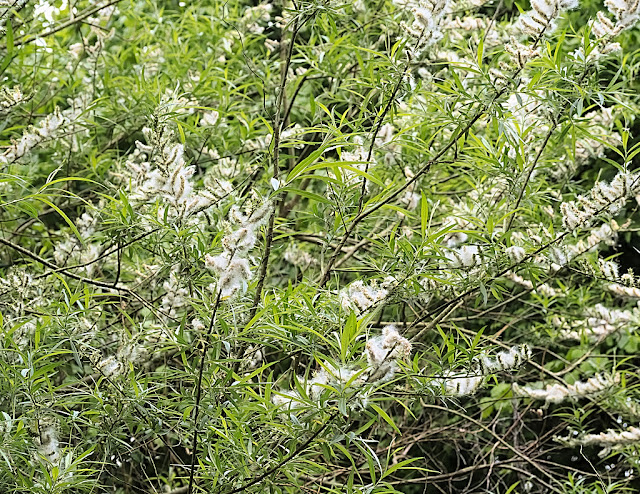 |
| White Willow Seeds - 30 April 2017 By the end of April, willow seeds are well formed and far more visible than the preceding catkins |
But the willow is not only useful to humans, it is a valuable food plant for many insects. In particular, the caterpillars of three of our largest moths, the red underwing, the puss moth, and the eyed hawk moth, all feed on the willow.
On a botanical note, I have identified the narrow leaved willows in the park as white willow, but this is by no means certain, as they could equally well be crack willow or hybrids. Similarly, I have used the name goat willow for the broad leaf varieties with only marginally more confidence.
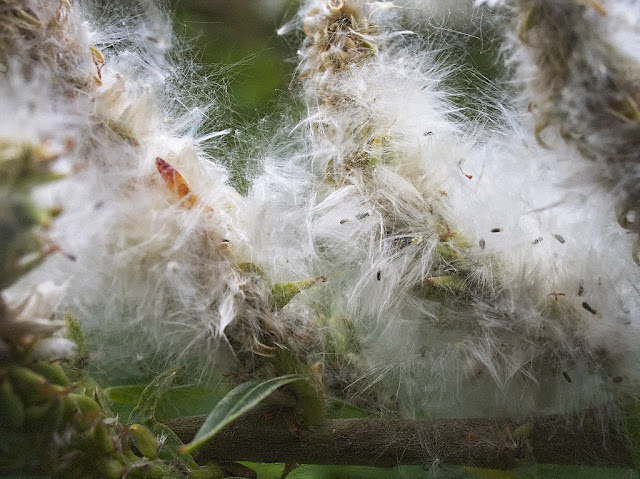 |
| White Willow Seeds - 2 April 2017 These seeds will soon blow about the park like snow and give a fluffy white covering to ground and water. |
Hornbeam
Other trees in Milton Country Park that have catkins at this time of year include birch, poplar and hornbeam. The latter is a tree I have never seen, or at least positively identified, until this year. Even then, I initially confused it with the beech trees: it has similarly shaped leaves and a smooth bark, but the leaves are out earlier than the beech and the flowers are completely different.
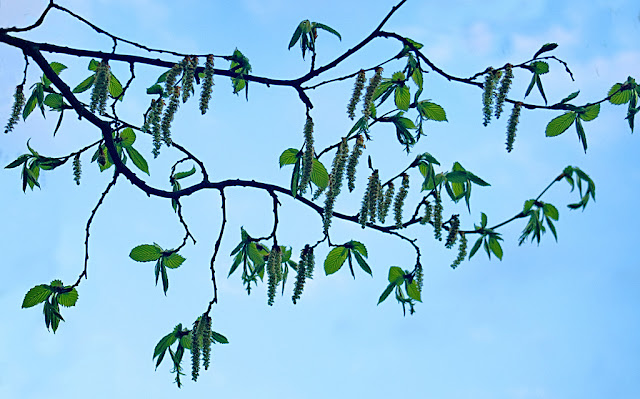 |
| Hornbeam - 2 April 2017 The hornbeam is associated with clairvoyance, wisdom, and long life. In some folklore, the hornbeam itself is held to be immortal. |
The wood of hornbeam is very hard, harder than oak, and it is this characteristic that gave it its name: in Old English 'horn' meant hard, and 'beam' meant tree. Because its wood is so hard, hornbeam is rarely used for cabinet making as it tends to blunt tools, and is much more commonly used where its strength is an asset: for making butcher's blocks, cog wheels, and striking hammer in pianos. Romans used it to make their chariots.
 |
| Hornbeam Catkins - 2 April 2017 Fertilised seeds mature and ripen to nutlets a favourite food of the hawfinch |
Further Reading
Mandy Haggith: WillowTrees For Life: Willow
Kindred Spirit Magazine: Willow Ways
Tree Lore: Willow
Woodland Trust: Willow, white (Salix alba)
Woodland Trust: Fascinating Tree Facts
SooperArticles: Common Hornbeam Tree
Next: Apple Blossom
No comments:
Post a Comment